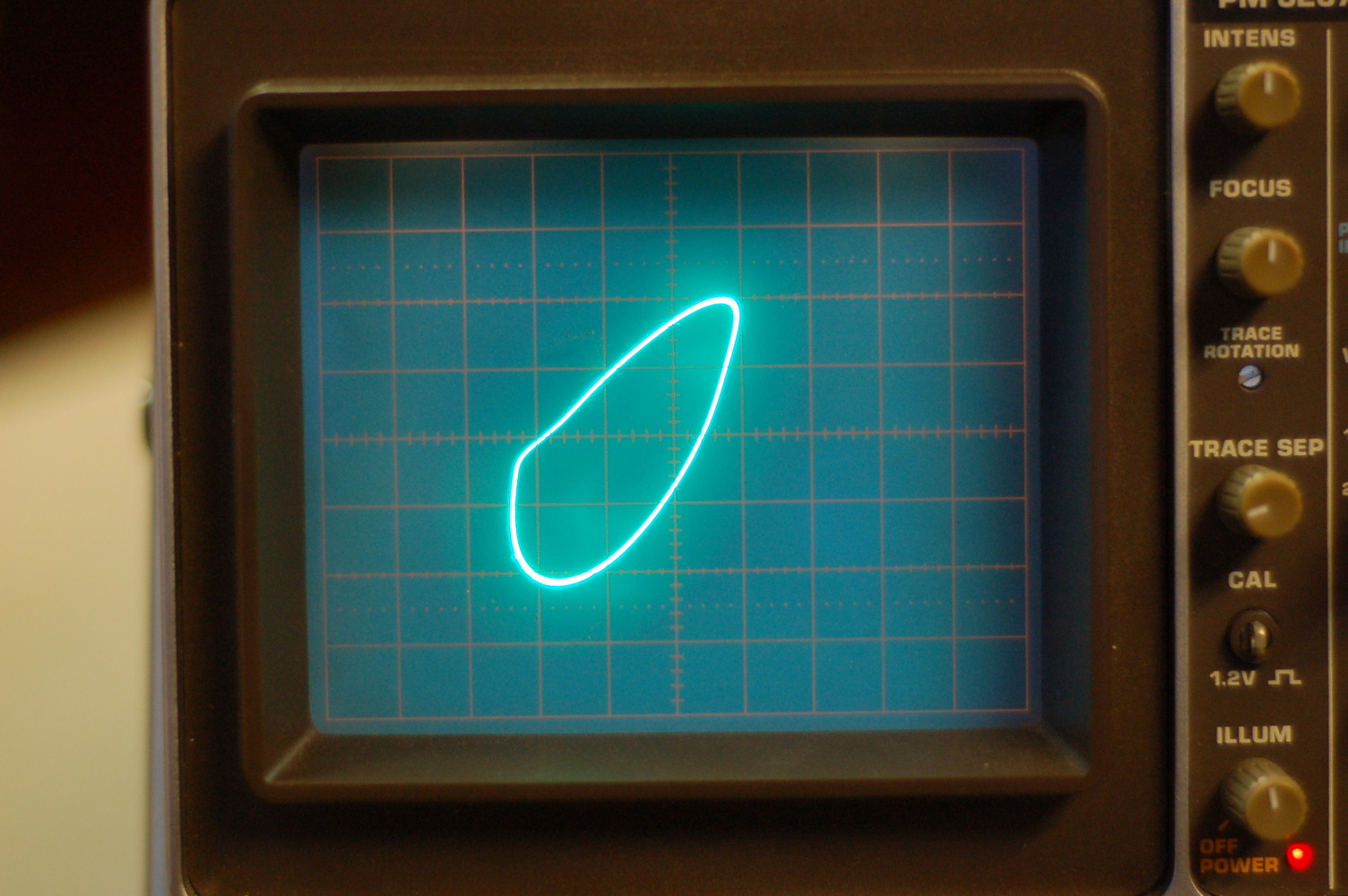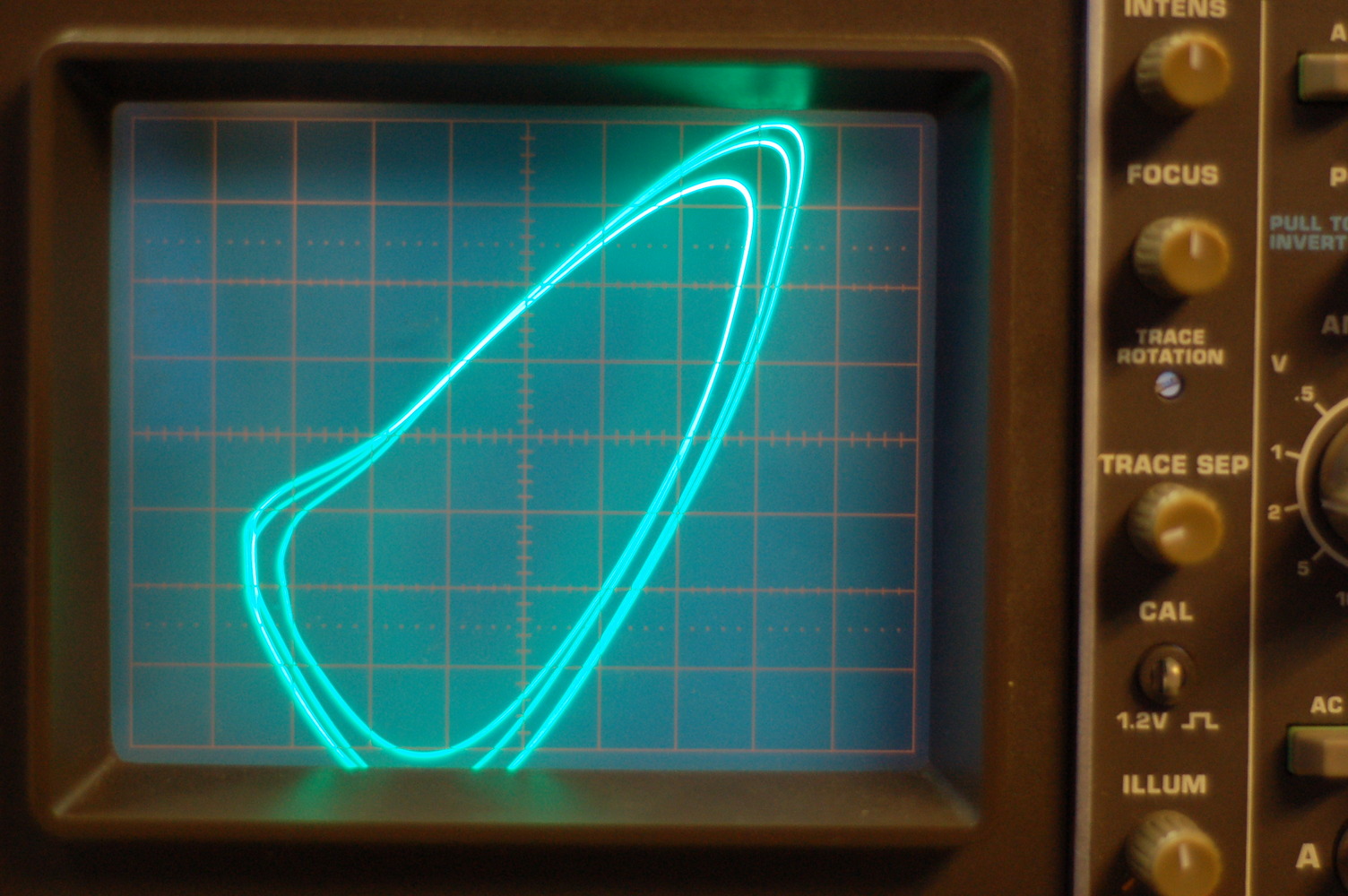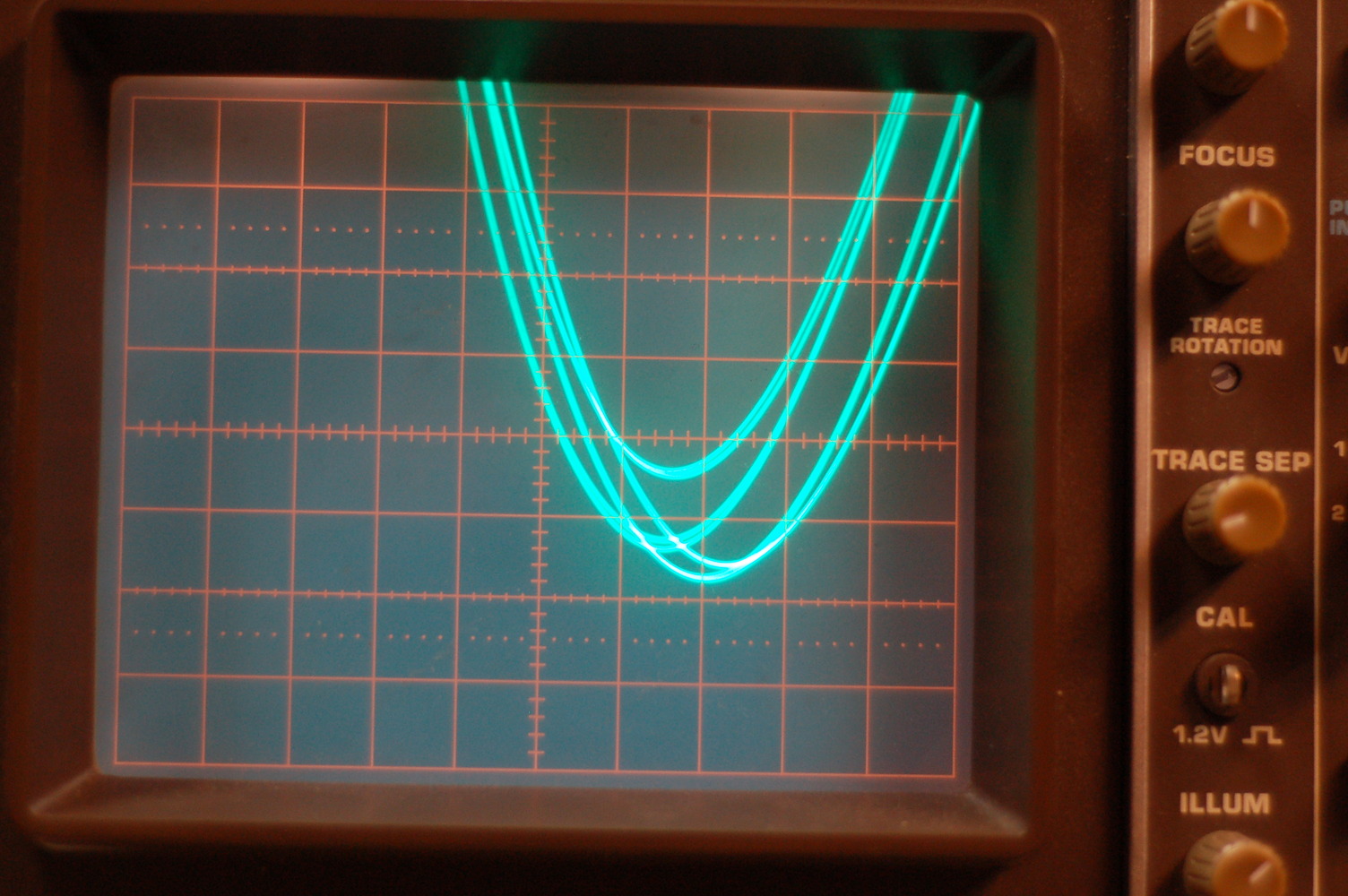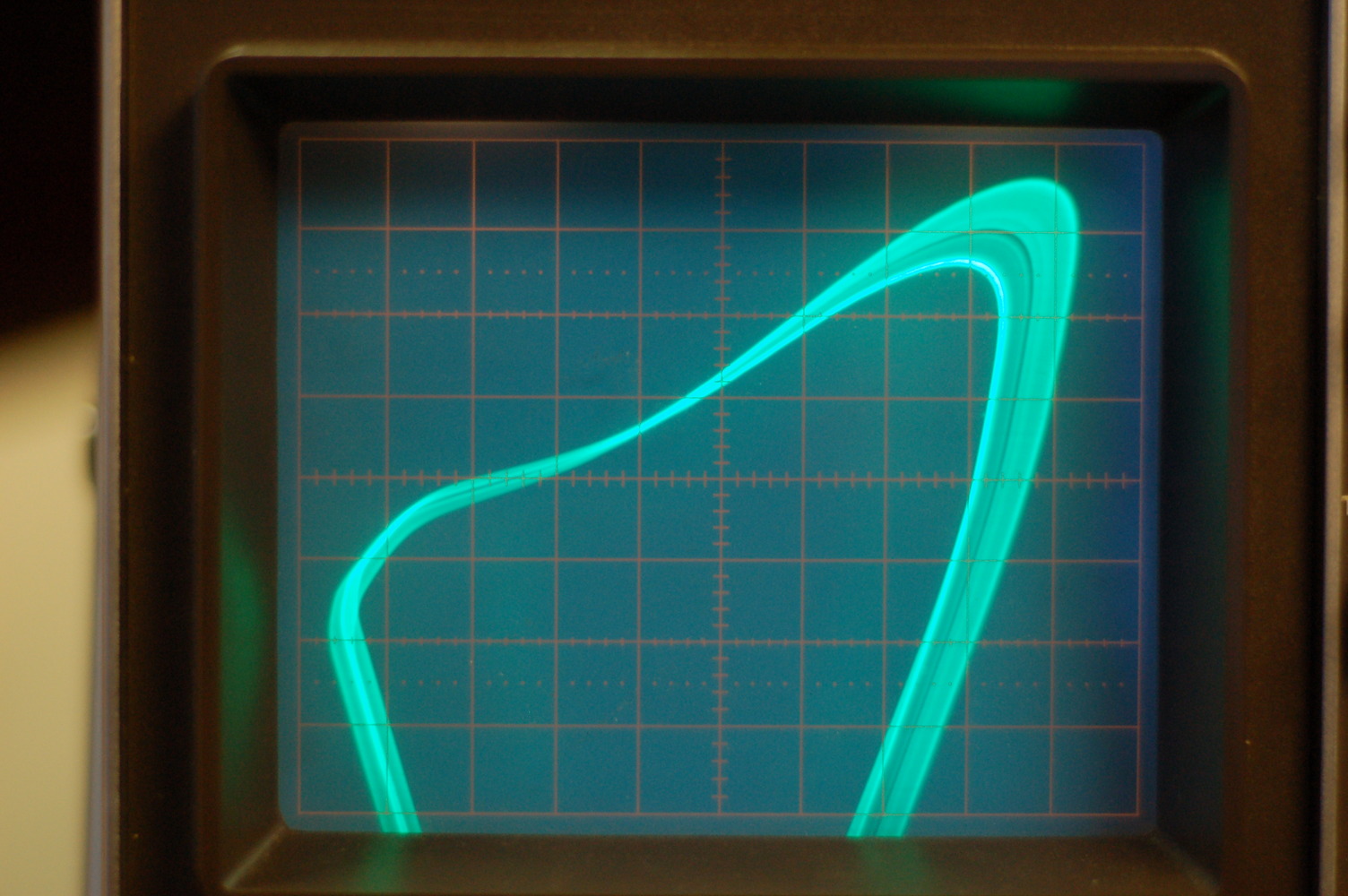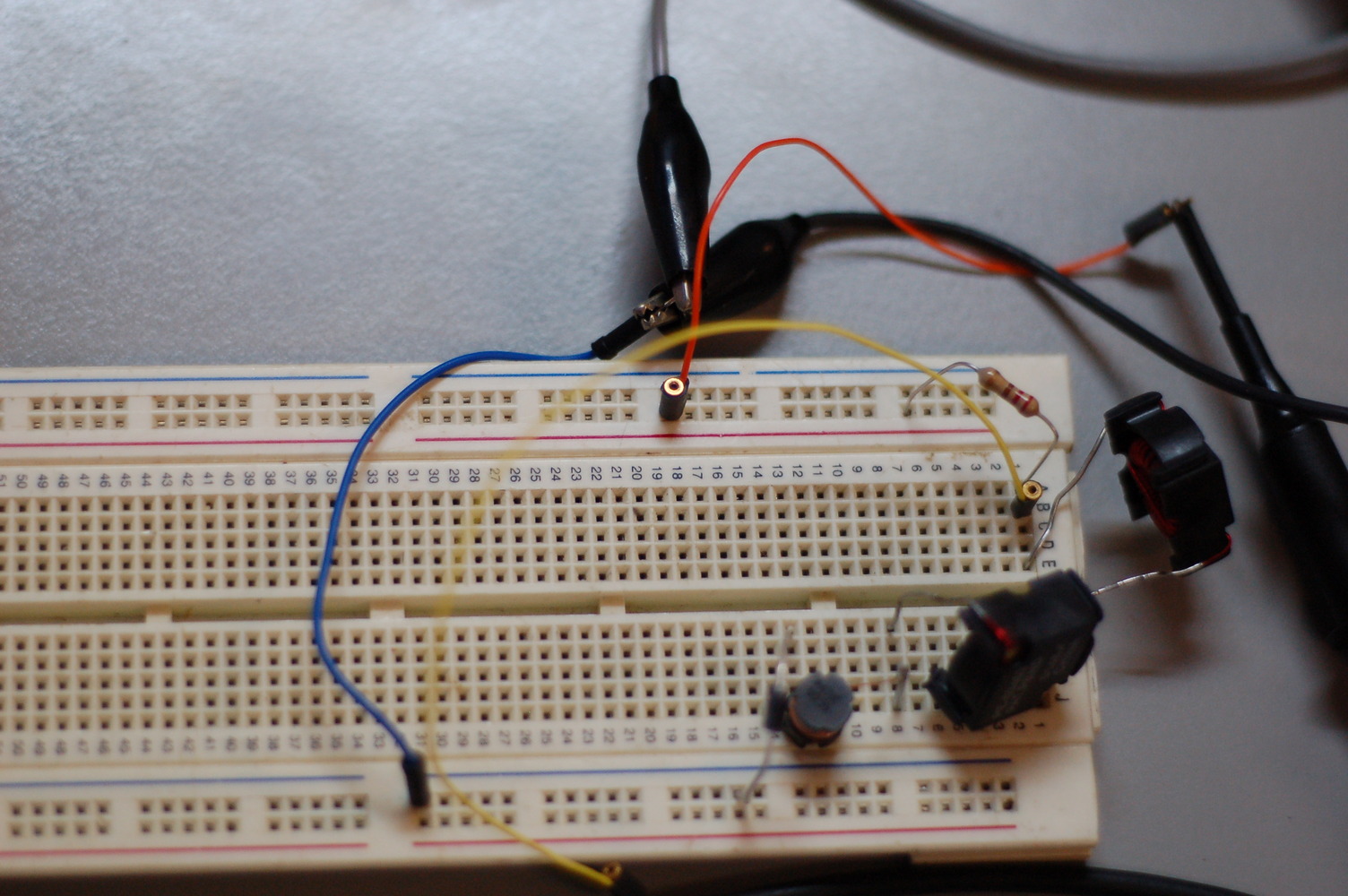ChaoticCircuits: Difference between revisions
Jump to navigation
Jump to search
Created page with " see also IgorsProjectIdeas __FORCETOC__ Build a simple electonic chaos demo for my course. Chaos can be observed using an oscilloscope. A portable one can be built with [htt..." |
No edit summary |
||
| Line 1: | Line 1: | ||
{{Project | |||
|Name=Chaotic circuits | |||
|Status=Completed | |||
|Contact=gori | |||
}} | |||
see also [[IgorsProjectIdeas]] | |||
see also IgorsProjectIdeas | |||
__FORCETOC__ | __FORCETOC__ | ||
Build a simple electonic chaos demo for my course. Chaos can be observed using an oscilloscope. A portable one can be built with [ | Build a simple electonic chaos demo for my course. Chaos can be observed using an oscilloscope. A portable one can be built with [http://code.google.com/p/arduinoscope/ an arduino] | ||
== Background reading == | == Background reading == | ||
| Line 57: | Line 61: | ||
* With smedings help, we determined that the inductance of the three coils is 1351 uH or approx 1.4 mH | * With smedings help, we determined that the inductance of the three coils is 1351 uH or approx 1.4 mH | ||
=== Results === | === Results === | ||
[[File:1-period.JPG]] | |||
[[File:2-period.JPG]] | |||
[[File:4-period.JPG]] | |||
[[File:8-period.JPG]] | |||
[[File:chaos.JPG]] | |||
[[File:circuit.JPG]] | |||
Revision as of 09:31, 3 October 2011
| Project Chaotic circuits | |
|---|---|
| Status | Completed |
| Contact | gori |
| Last Update | 2011-10-03 |
see also IgorsProjectIdeas
Build a simple electonic chaos demo for my course. Chaos can be observed using an oscilloscope. A portable one can be built with an arduino
Background reading
- One of the simplest possible chaotic circuits : http://www-physics.ucsd.edu/~des/DSmithChaosExperiment.pdf
- This one seems particularly interesting - possibility o encrypt analog sygnal : http://www.fortunecity.com/emachines/e11/86/circsync.html
- http://www.cornellcollege.edu/physics/courses/phy312/Student-Projects/Chaotic-circuits/Chaos.html
- Original paper: [httphttp://link.aps.org/doi/10.1103/PhysRevLett.47.1349 Period Doubling and Chaotic Behavior in a Driven Anharmonic Oscillator]
Version 2.0
Create the circuit that works at a lower frequency. Smith also describes a circuit that operates at 75 KHz instead of 2 MHz. Main bottle neck is the required large inductance
Goal is to :
- Be able to hear the chaos
- Have the whole thing portable, without the need for an external oscilloscope and signal generator
- Have it nice and presentable so it can be used as a demo
Todo:
- Calculate the inductance and capacitance required to achieve a resonant frequency in the audible range, preferably around 440 Hz. Conservative human hearing range is from 20 Hz to 15 kHz.
- Identify the operational limits of the [httphttp://code.google.com/p/arduinoscope/ arduinoscope] - max seems to be around 200 kHz, well above audible range
- Make sure that an arduino based scope can observe the signal.
- salvage/build/buy an appropriate spool
- create a suitable analogue signal generator that can drive the whole thing. Arduino can no do this, as it has no analogue circuitry for the job. PWM will (propbably) not do.
- Add speakers in order to hear the chaotic harmonics under/overtones
- package it is something transparent so that it makes a nice demo
Version 1.0
- Following : http://www-physics.ucsd.edu/~des/DSmithChaosExperiment.pdf
- Working oscilloscope and signal generator present, capable of 2Mhz
- Components according to the manual :
- 200 ohm resistor
- inductor, 100 microHenry needed, available a PE-53653 , with 16.1�H
- diode - either works: 1N4001, 1N4004, 1N4005, 1N4007
- As built, the circuit does not display any chaotic behavior as we change the amplitude, The inductor is almost 5 times to weak.
- I have several spools, adding an extra spool in series, bringing the inductance up to 32 �H does not help.
- When adding random spools, it is good to measure its inductance. Here is a way to do it : http://www.daycounter.com/Articles/How-To-Measure-Inductance.phtml
BOM
- 1N4007 diode
- 220 ohm resistor
- (2 x 16) 32 �H + a random spool (code 471K 98139)
- Signal:
- 1.5 MHz
- Amplitude op 0 dB
- sinus signaal
- Improvements needed :
- Calculate / measure the currently installed inductance, and bring it up to spec, so that we get a nicer signal split than now
- With smedings help, we determined that the inductance of the three coils is 1351 uH or approx 1.4 mH
